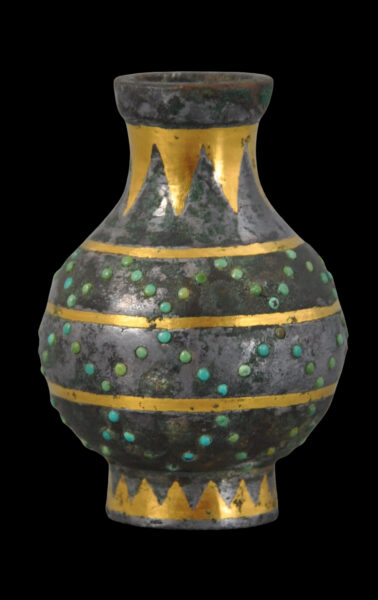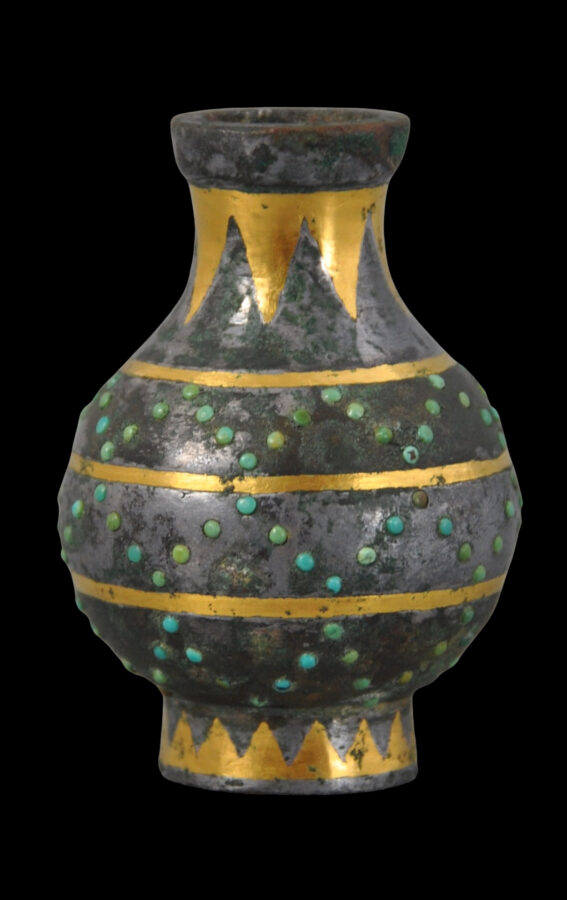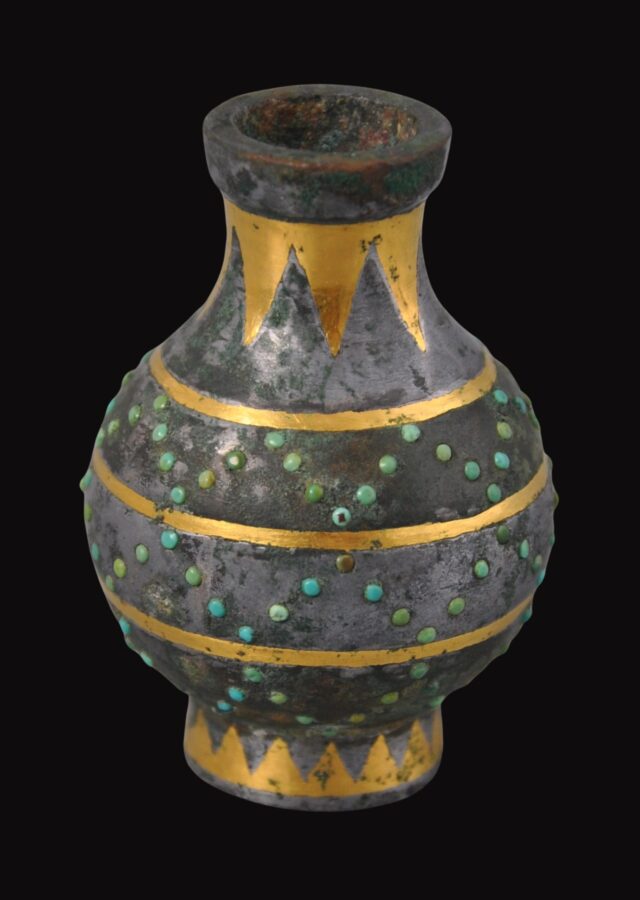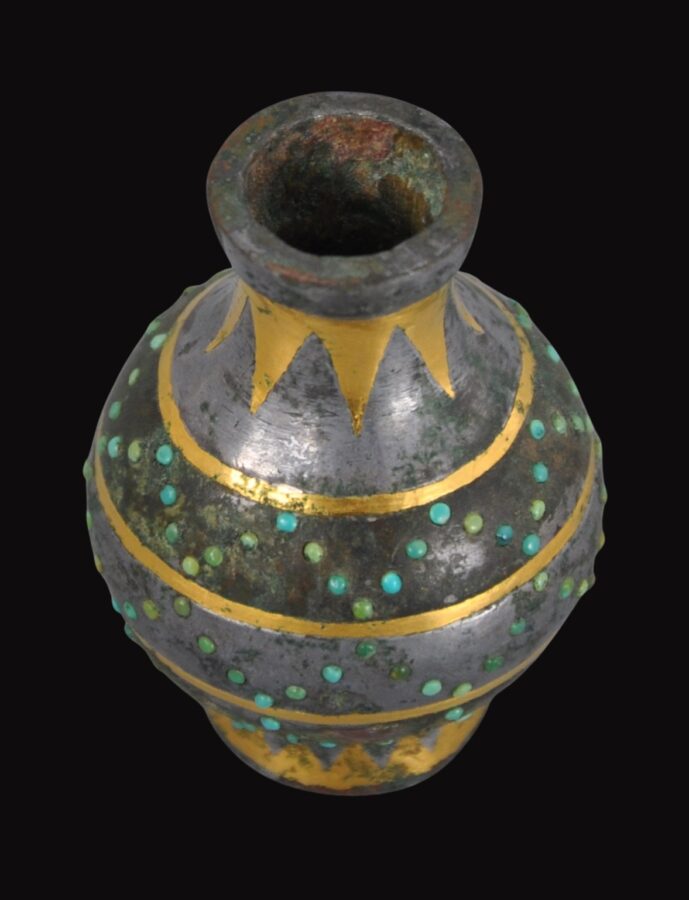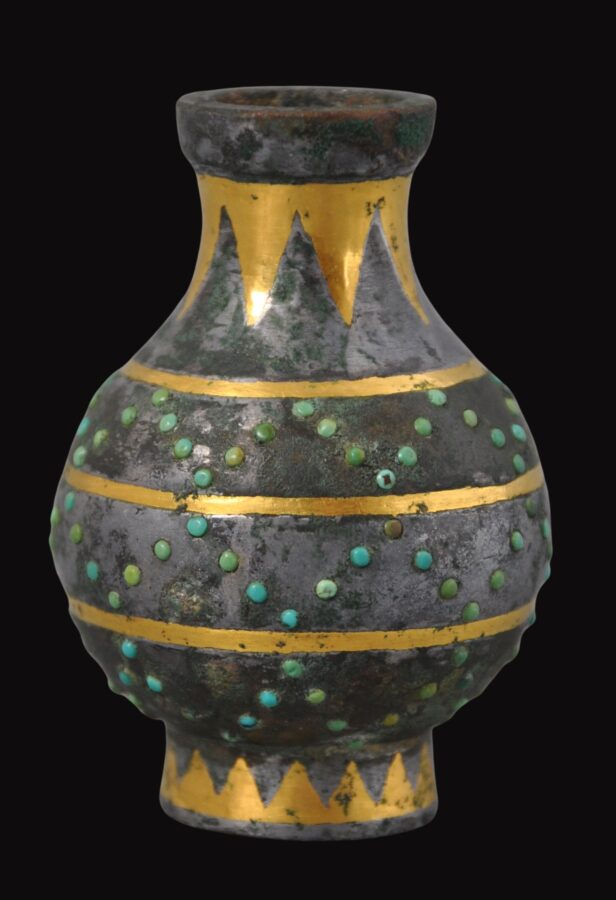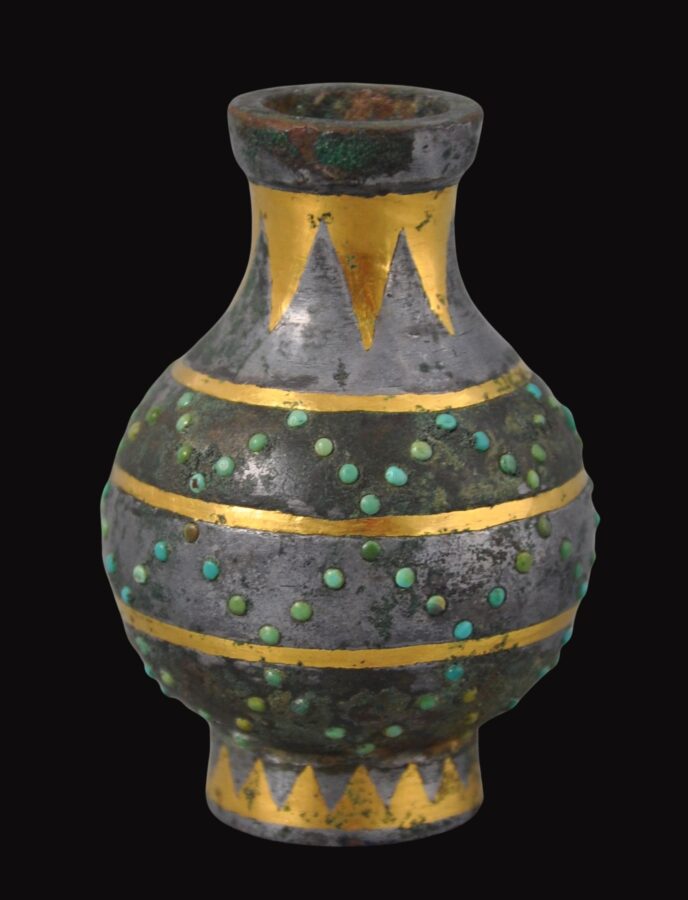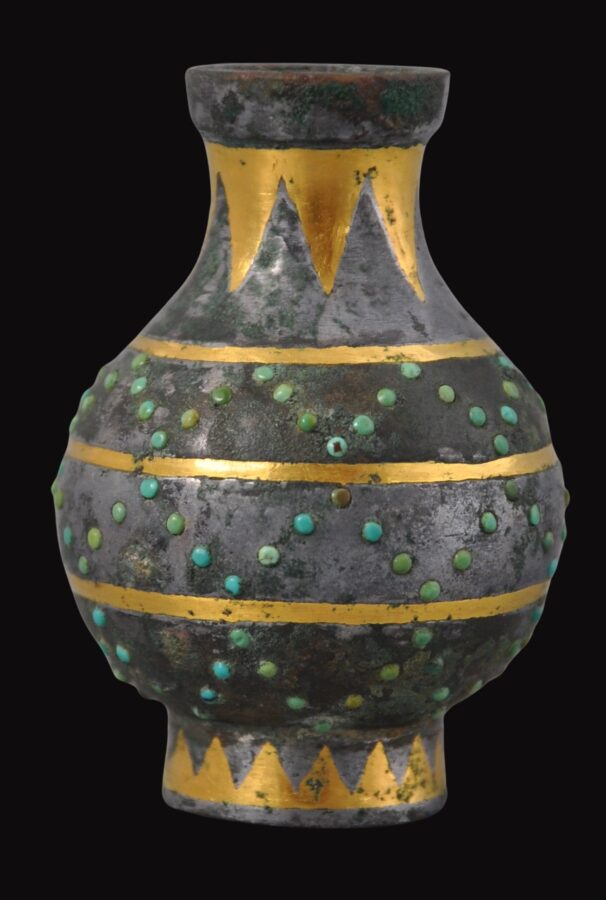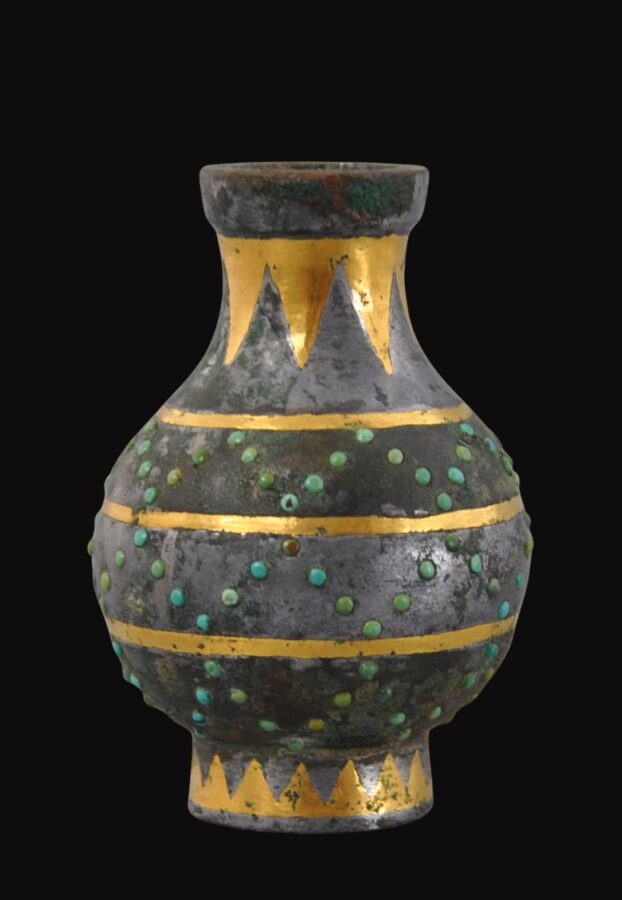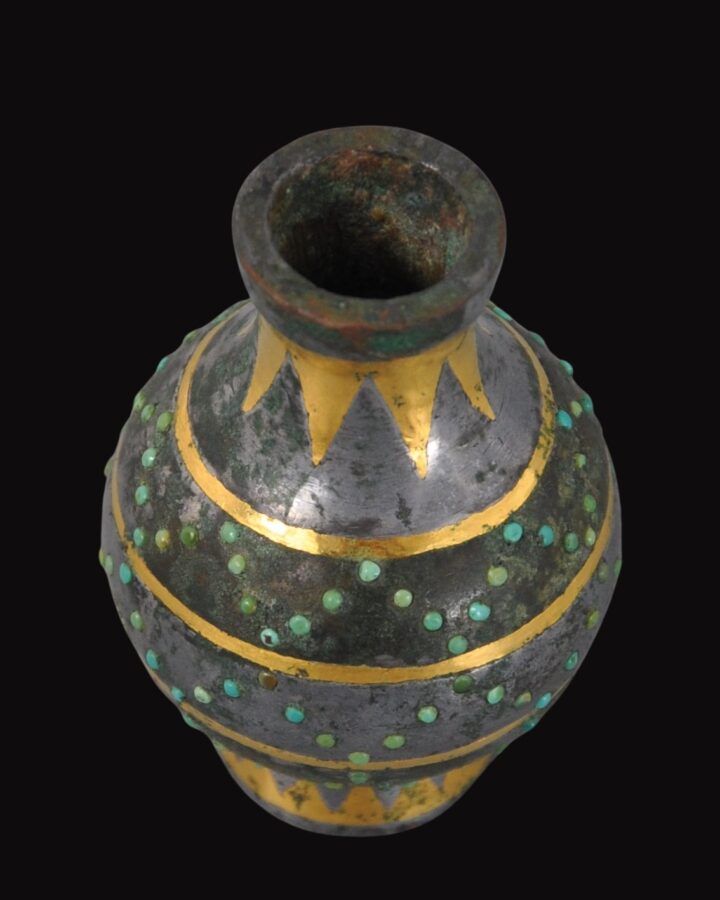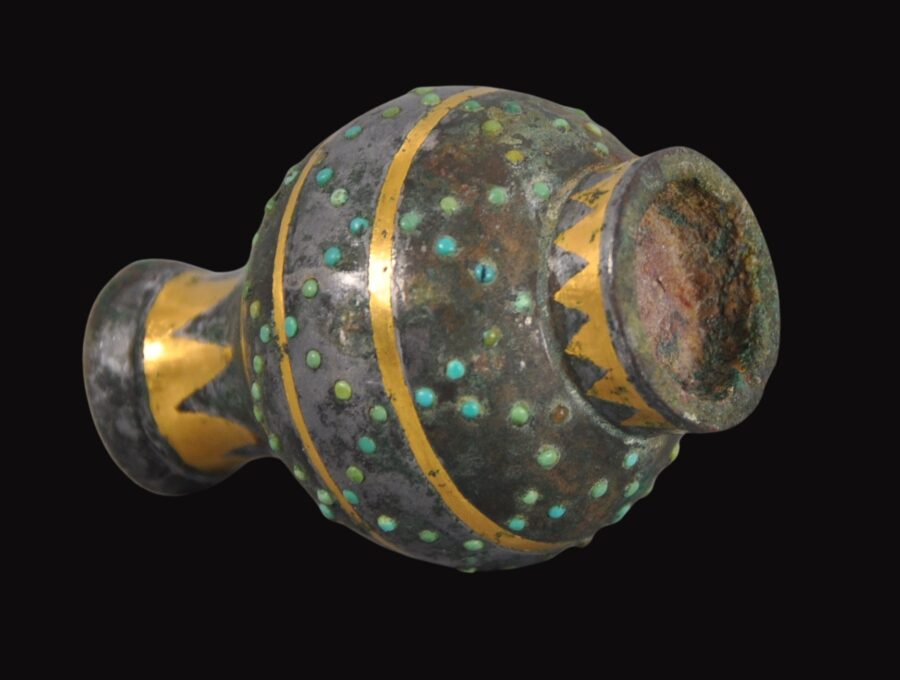This miniature bronze vase is based on a hu, an early wine bronze vessel that dates to at least the Shang dynasty (1600–1045 BC).
Of cast bronze, it has the classic hu form of a pear-shaped vessel, with a low ring foot, and a neck that widens to a mouth.
It is inlaid, top and bottom, with bands of triangles in gold, and then with three, fine rings of gold about its globular body.
Additionally, it is inset with three bands of tiny turquoise cabochons in triangle motifs, also around the body.
The profuse use of tiny turquoise cabochons to decorate small Han Dynasty items can be see in a gilded case made to hold an ink slab attributed to the Eastern Han Dynasty, in China’s Nanjing Museum, and illustrated in Xu, (2001, p. 51).
Hu were an important part of religious and cultural rituals. Often they were presented as gifts to vassal rulers. Later, they were presented as wedding gifts, funeral items, travel gifts, and even to commemorate land grants.
The example here has a fine, greenish patina, with clear, obvious antiquity. The gold and turquoise inlay is intact. The vessel is thickly walled and heavy in the hand. It’s diminutive size suggests that it had a symbolic, ritual function, perhaps as a stand-in for a larger hu.
References
Rawson, J. (ed.), The British Museum Book of Chinese Art, British Museum Press, 1992.
Xu, H. (ed.), The Treasures of the Nanjing Museum, London Editions, 2001.


